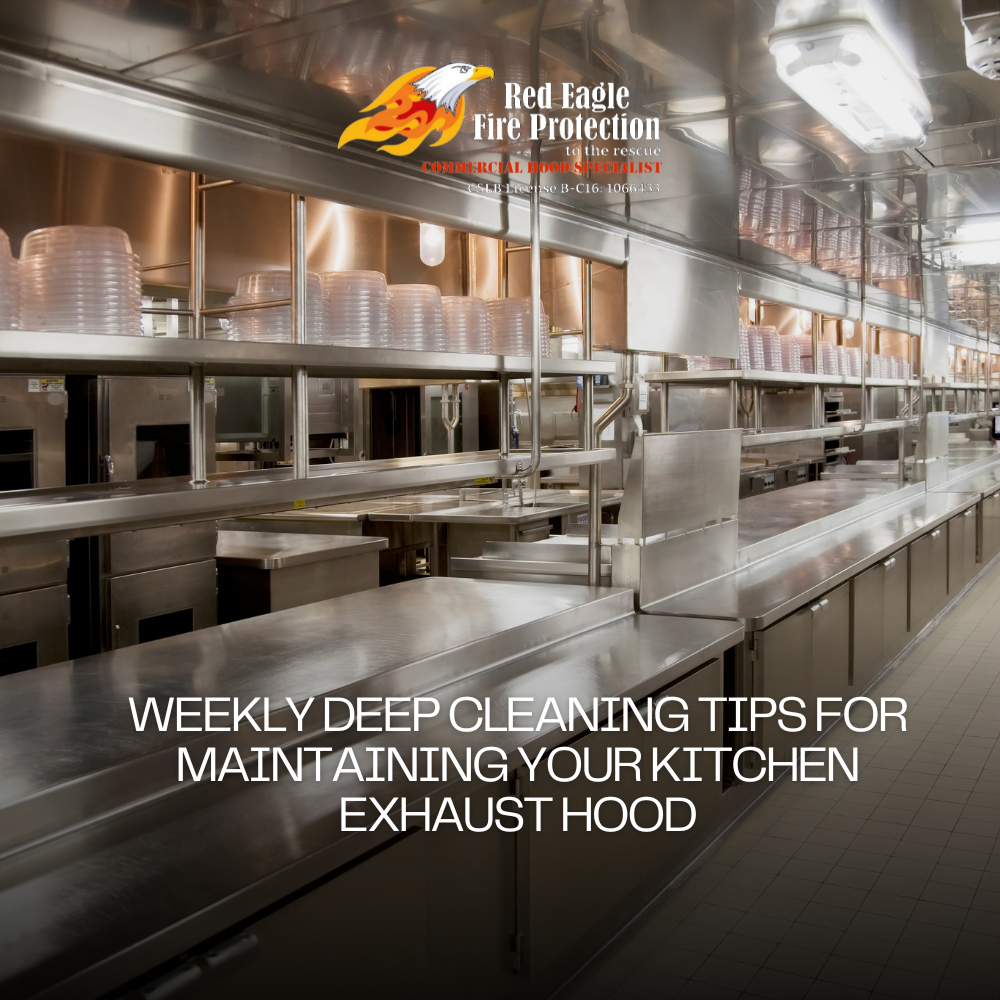Maintaining a kitchen exhaust hood is vital for ensuring a clean, safe, and efficient cooking environment. While daily cleaning is crucial for preventing immediate grease buildup, a more thorough weekly deep cleaning routine addresses areas that may not receive attention during daily maintenance. Here, we provide comprehensive tips for weekly deep cleaning of your kitchen exhaust hood to keep your kitchen running smoothly and safely.
Importance of Weekly Deep Cleaning
Weekly deep cleaning of your kitchen exhaust hood cleaning serves several key purposes:
- Fire Prevention: Regular deep cleaning reduces the risk of grease fires by removing accumulated grease that daily cleaning may miss.
- Enhanced Air Quality: Thorough cleaning ensures that the exhaust system functions efficiently, removing smoke, steam, and odors effectively.
- Compliance: Many health and safety regulations require regular deep cleaning of kitchen exhaust systems to maintain compliance.
- Prolonged Equipment Life: Regular deep cleaning prevents excessive wear and tear, extending the life of your exhaust hood and related components.
Essential Weekly Deep Cleaning Tasks
1. Disassemble and Clean Filters
Even with daily cleaning, grease filters can accumulate residue that requires more thorough cleaning. Remove the filters and soak them in a solution of hot water and a commercial-grade degreaser. Use a brush to scrub away any stubborn grease deposits, rinse them thoroughly, and let them dry completely before reinstalling.
2. Clean the Exhaust Hood Interior and Exterior
While daily wiping of the hood’s exterior and interior is essential, a weekly deep clean involves using a stronger degreasing solution. Spray the degreaser on all surfaces, allowing it to sit for a few minutes to break down grease. Use a non-abrasive scrub brush or cloth to scrub all surfaces, paying extra attention to corners and crevices where grease can accumulate.
3. Inspect and Clean the Fan and Motor
The fan and motor are critical components of the exhaust system and can accumulate grease over time. Turn off and unplug the hood before cleaning these parts. Use a degreasing spray and a soft brush to clean the fan blades and motor housing. Ensure that all components are dry before plugging the hood back in and turning it on.
4. Check and Clean the Ductwork
Grease can build up inside the ductwork, reducing the efficiency of the exhaust system and posing a fire hazard. While professional cleaning of the entire duct system is recommended periodically, you can clean accessible parts of the ductwork weekly. Use a long brush to remove grease and debris from the ducts near the hood.
5. Clean and Empty Drip Trays
Drip trays collect grease that drips from the filters and should be emptied and cleaned daily. For weekly deep cleaning, soak the trays in hot, soapy water and scrub them thoroughly with a brush to remove any residual grease. Rinse and dry them before placing them back in the hood.
6. Polish Stainless Steel Surfaces
After cleaning, polish stainless steel surfaces to maintain their appearance and prevent future grease buildup. Use a stainless steel cleaner and a soft cloth, wiping in the direction of the grain for the best results.
Tools and Products for Deep Cleaning
- Commercial-Grade Degreaser: Effective for breaking down tough grease deposits.
- Soft Brushes and Cloths: Non-abrasive tools that won’t scratch surfaces.
- Hot, Soapy Water: Useful for soaking filters and drip trays.
- Long Duct Brush: Helps reach and clean inside the ductwork.
- Stainless Steel Cleaner: Maintains the appearance of stainless steel surfaces.
- Protective Gear: Gloves and eye protection to safeguard against harsh cleaning chemicals.
Best Practices for Weekly Deep Cleaning
1. Schedule Cleaning During Low Traffic Periods
Plan your deep cleaning for a time when the kitchen is not in use to avoid disruptions and ensure safety. This is often best done at the end of the week or during a scheduled maintenance period.
2. Follow Manufacturer Guidelines
Refer to the manufacturer’s instructions for specific cleaning and maintenance recommendations. This ensures that you are using the correct methods and products for your particular exhaust hood model.
3. Ensure Proper Ventilation
When using strong cleaning chemicals, ensure the kitchen is well-ventilated to prevent inhalation of fumes. Open windows or use additional fans if necessary.
4. Train Staff on Deep Cleaning Procedures
Proper training ensures that staff understand the importance of weekly deep cleaning and know how to perform each task correctly. Assign specific cleaning duties to team members to ensure consistency.
5. Document Cleaning Activities
Keep a log of weekly deep cleaning activities, noting any issues or necessary repairs. This documentation is useful for tracking maintenance and can be beneficial during health and safety inspections.
Regular weekly deep cleaning of your kitchen exhaust hood cleaning is a critical part of maintaining a safe, efficient, and compliant commercial kitchen. By following these tips and best practices, you can ensure that your kitchen exhaust system operates at peak performance, providing a clean and healthy environment for your staff and customers.
READ MORE:
Daily Kitchen Exhaust Hood Cleaning Tasks for a Spotless Kitchen
Seasonal Maintenance: Keeping Your Commercial Kitchen Exhaust Hood in Top Condition Year-Round

